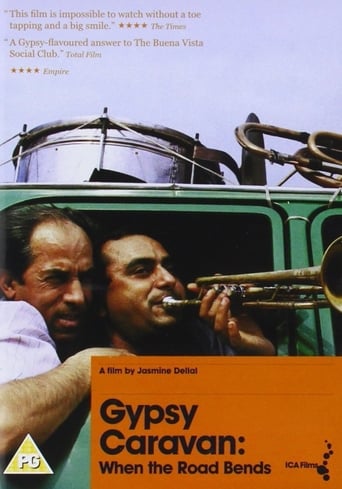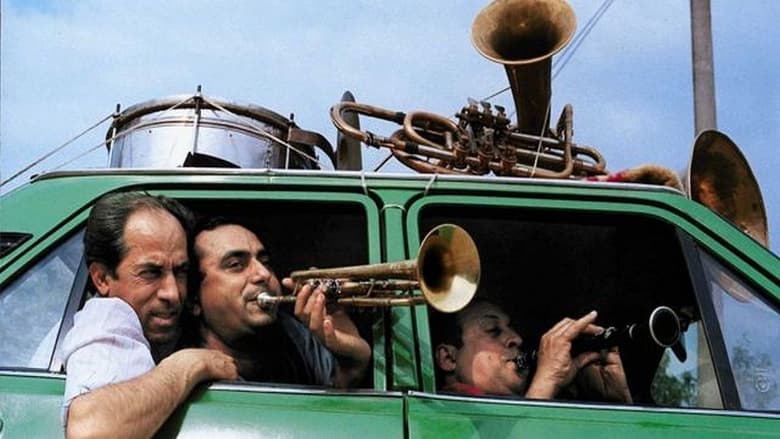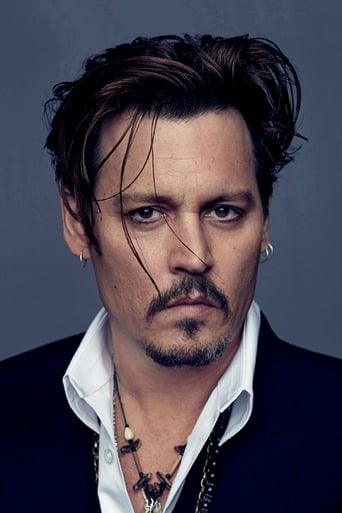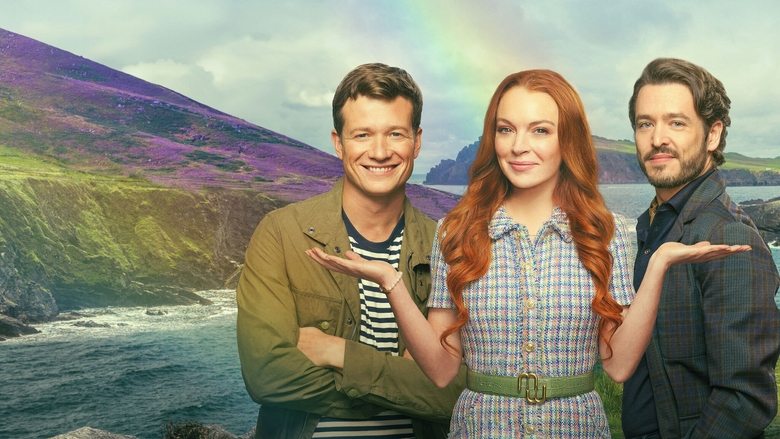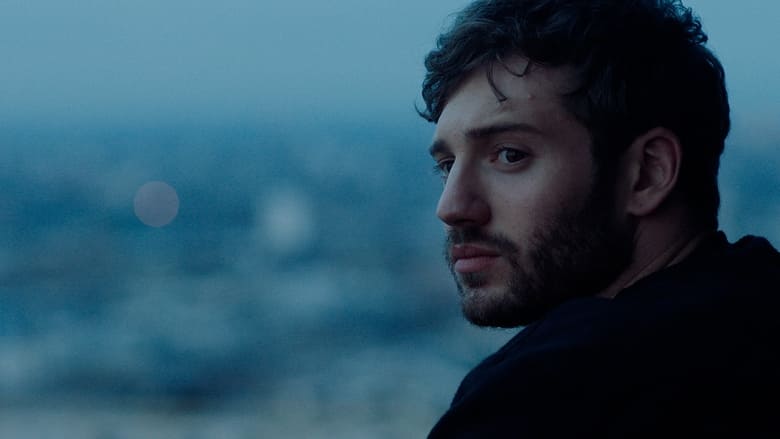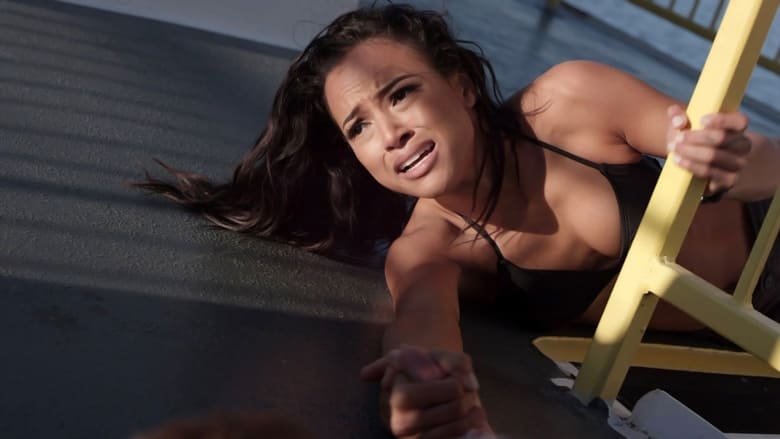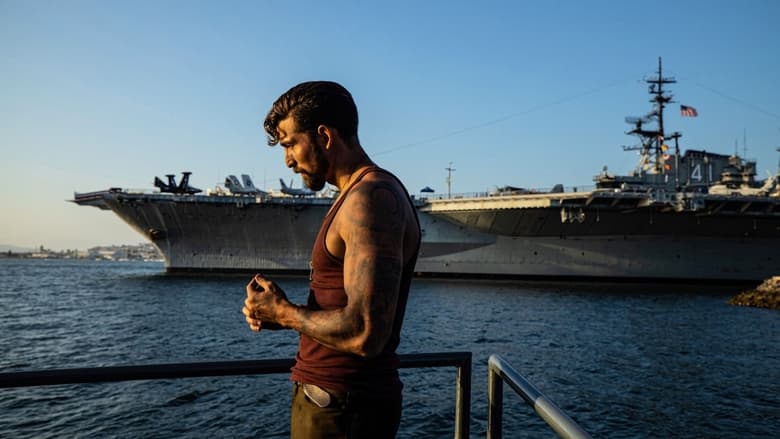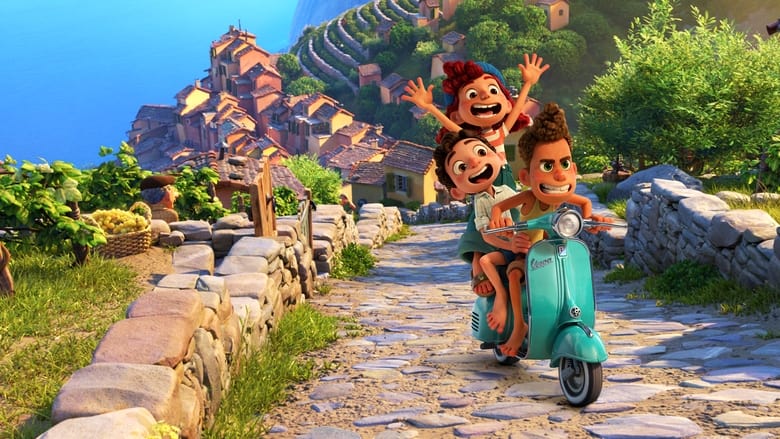A brief look into Romany culture and Rom (Gypsies) from around the globe as five famous Romany groups tour the USA.


Similar titles
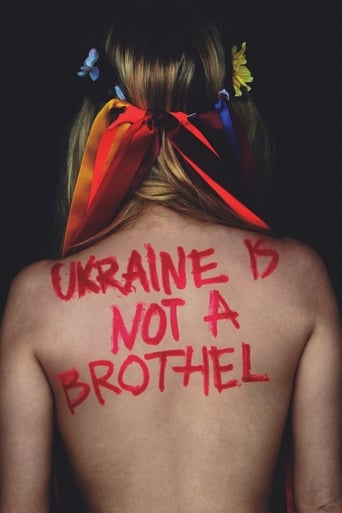
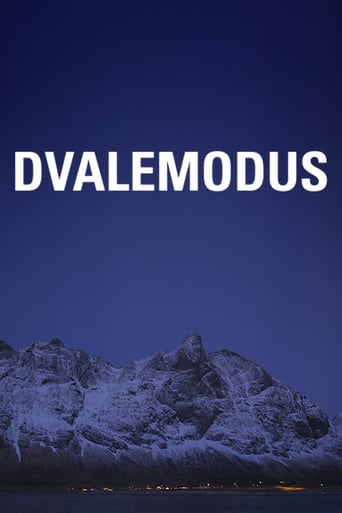
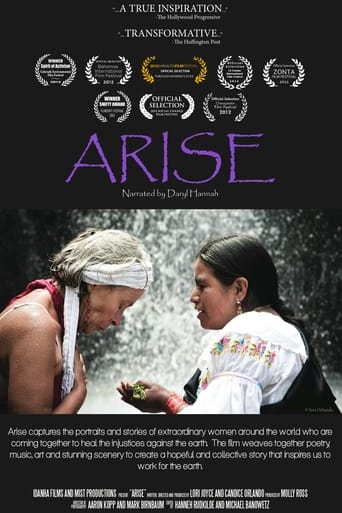

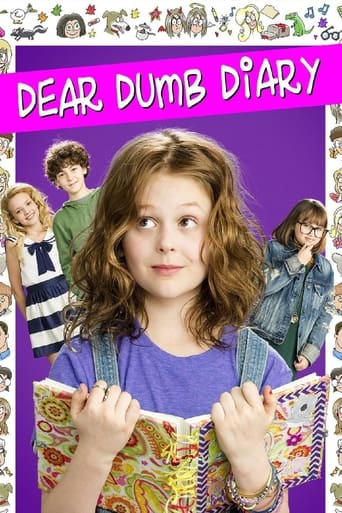
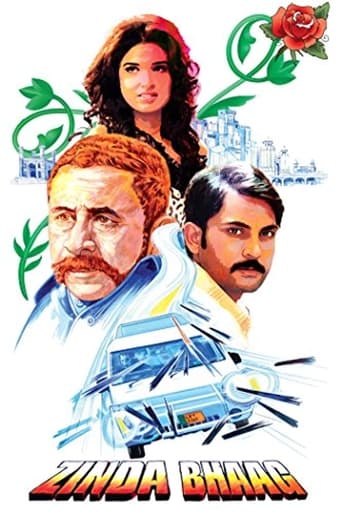
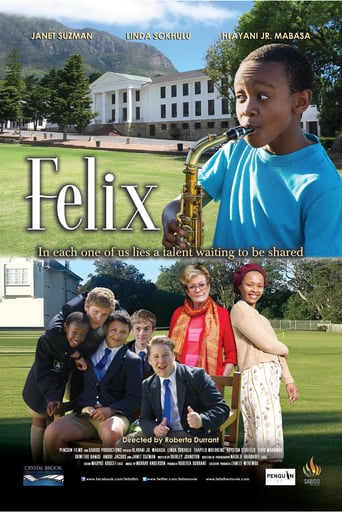
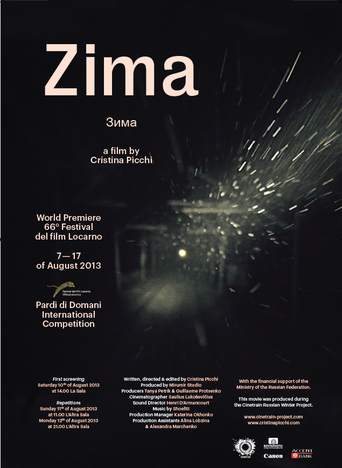
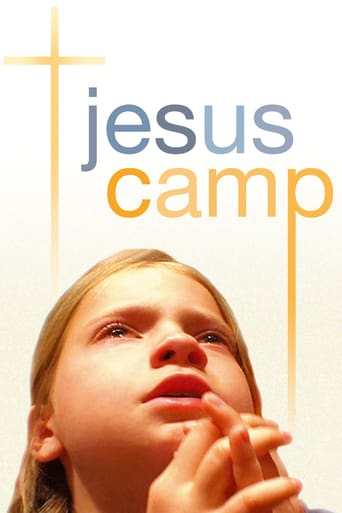
Reviews
A few years back, five groups of musicians and performers, from four different countries - India, Romania, Macedonia, Spain - yet all united by their common gypsy heritage, set off on a six-week tour through North America that came to be known as the Gypsy Caravan. Albert Maysles' "When the Road Bends: Tales of a Gypsy Caravan" is a documentary account of that tour.The movie makes it clear that gypsy music has its roots firmly planted in personal hardship and social protest, that it is an organic response to the bigotry and oppression gypsies have suffered under from time immemorial.The filmmakers spend much of their time interviewing the performers either behind-the-scenes at rehearsals or on the bus the group travels on from one location to the next. It is here that we see the camaraderie that develops among the members, as well as the personal conflicts and artistic disputes that are an inevitable part of any group activity. But it is when they are all on stage, performing to packed houses in cities like New York, Miami, San Francisco, etc., that we feel the sheer joy that comes from sharing one's passion with an enraptured audience.The movie makers also travel to some of the performers' native towns and villages to try and get a feel for who these people truly are and the lands and cultures from which they spring.The result is a moving, informative, and musically enriching glimpse into a people and an art form that few Westerners know much, if anything, about.
"Gypsy" has long been for gadjos synonymous with murder and theft. Not so after Gypsy Caravan, a documentary about musical Romani bands from four countries touring to sold out audiences, who react enthusiastically to the varied and energetic performances by a naturally charismatic people, whose fleshy elders personify the lusts of living apparent from their blistering violin playing to their indulgences in fried food and eccentric marriages.It is not possible to ignore the Gypsies' charisma: Unforgettable is Esma Redzepova, a heavy Macedonian diva who occupies the heart of the film's message about an often maligned culture being rehabbed in front of our eyes by charming music and dance. Her 47 adopted kids are testimony to the holding power of Gypsy family; she couldn't possibly be called anything but "Queen of the Gypsies." Part of the enchanting mood is due to the lensing of the famous documentarian Albert Maysles, along with Alain de Halleux, who captures the folds and creases of older faces along with the freshness of babies and energy of teenage performers. Legendary performer Taraf de Haidouks holds a wedding for his 13-year-old daughter that involves an entire Romanian village, as appropriate a symbol of the enduring love and charm of the Gypsy culture.
This documentary is based on a North American concert tour of the same name conducted in 1999 and 2001 involving five well-known groups of musicians, singers, and dancers of the Romani people hailing from four countries--India, Macedonia, Romania and Spain. Each group is distinctive. Esma Redepova from Skopje, Macedonia, who leads off the performance, is a portly diva of great energy and a certain age whose commanding voice evokes Tibet, India, and Flamenco. Called "the queen of the gypsies," she's noted as a humanitarian fund-raiser and brought up dozens of orphans whom she turned into musicians. Antonio El Pipa, from Jerez de la Frontera in Spain, dances Flamenco style with his aunt Juana, whose near-bass voice has the authentic raspy deep-throated wail to it, and when she sings of having found God after her son and husband were relieved of their drug addiction, it still sounds like classic Flamenco. Taraf de Haidouks ("band of outlaws") from the village of Clejani, Romania, headed by the elderly Nicolai Neaucescu, a tireless, toothless, chain-smoking busker, is more the kind of group one may associate with "gypsy" music--lots of wailing strings and wailing men in shabby suits and rumpled hats. Rather similar is Fanfare Ciocarlia, a 12-piece brass band from Zece Prajini, another Romanian village near the Moldavian border. Their music blends Middle Eastern, Turkish, and Slavic elements and has klezmer overtones. Odder is Maharaja (AKA Musafir) from Rajisthan, India, three fine musicians in gorgeous attire playing in a folkloric style that suggests Indian and Arabic music and accompanying a cross-dressing self-taught Sufi-style dancer, Sayari Sapera, who spins around on his knees: better camera work would have shown the details of this feat; but camera work is one of several areas in which this film does not excel.'Gypsy Caravan''--why was the tour so titled when "gypsy" is a pejorative term for the Roma people based on a false derivation from Egypt?--is a film that does too much with other things and not enough with the music. It is interesting, though not entirely surprising, that the groups in the show spoke a lot of different languages but felt a common bond; it's slightly embarrassing fun to see the Indians do a take-off on Flamenco; and all the groups, after bonding on the bus and during down times, somehow team up and blend for a finale toward the end of the tour. As shown in films constantly spliced in, showing the performers in their various home countries, each group has a story of trials and sufferings, poverty, humility, and hard-won success. The cross-dressing dancer was orphaned as a child; Tarif's super-speedy lead violinist lost his youngest daughter in a terrible accident; we've already mentioned Aunt Juana's addict male family members; and one of the notables passes away enroute. But do we have to follow the groups in motels and crowded together on the bus, or being told of baggage limitations on US planes? Perhaps all this would have worked, had the mostly clumsy photography not been done with what Manohla Dargis calls "consumer-grade video" cameras--and if, contrary to what some have commented, the transitions from music to talk to on-location background had not so often been so far from smooth. Even this might have been eminently forgivable if the performances were allowed to play through. They never are. A minute or two of music, singing, or dancing--and off to the interviews or the shots of somebody's tiny cottage or of tour members dozing or schmoozing on the bus.Which brings us to the inevitable comparison. There was a film about the range of Romani music made fourteen years ago. At the time it seemed the music was better than the film-making, but Tony Gatlif's 'Latcho Drom' (1993) looks like a masterpiece now, and it may be the Gatlif movie that most suits his meandering, impressionistic style.'Latcho Drom' uses Romani musicians from seven countries and wordlessly, focusing on the performances, moves across the planet from where the Roma are believed to have begun, in India, to Egypt, and on to Turkey, Romania, Hungary, France, and Spain. Not only does Gatlif's film allow the music to sing, over a wider range of national variations and with a richer sense of locale since each performance is at home rather than on an American stage. But somehow also the suffering of this beleaguered tribe, and the way they've focused their hard times into musical art, emerges more clearly in 'Latcho Drom' than in 'Gypsy Caravan,' despite the latter's plethora of words. One of the things you'll never forget is seeing and hearing a Rom survivor of Auschwitz--reminding us that the gypsies were annihilated with gays, Jews, and communists by the Nazis--play a searing dirge expressing his pain against a haunting visual background. And there's also time to see a real "gypsy caravan" of cars and buggies and hear a Parisian tribute to Django Reinhardt, the Romani guitarist who left an indelible mark on jazz music. Latcho Drom (which means "safe journey") has a remarkable flow, and one goes out with the bluesy sounds of the culture in one's ears and a strong sense of the family resemblances between the various styles as one goes westward with the Romani Diaspora.It's rather sad to learn that the legendary documentarian Albert Maysles was one of the cameramen for 'Gypsy Caravan.' This film, which has too much good material too poorly filmed and organized, is as chintzy and cluttered as some of the Roma houses where the interviews are staged. Too bad Jasmine Dellal didn't let the music speak for itself as Tony Gatlif did.
If you like Roma music (and if you don't I hope you can be reincarnated until you do; it'll be worth it) you'll love this brilliantly crafted documentary film (titled "Gypsy Caravan" in the version circulating in the U.S.). Director Jasmine Dellal and her two fine cinematographers, Alain de Halleux and Albert Maysles, go on a U.S. tour in 2002 with five of the very best Romani bands around. Their music is to die for. Here's a sketch of each group: "Fanfare Ciocarlia" is a 12 piece brass band from Zece Prajini, a NE Romanian village near the Moldavian border. Their music, sometimes referred to as "Balkan funk," blends Romanian, Roma, Turkish, Bulgarian, Serbian and even klezmer influences. They were featured in the recent German-Turkish hit drama, "Head On," and one of their numbers closes the comedy, "Borat.""Taraf de Haidouks" (it means band of brigands - or outlaws) hails from the Romanian village of Clejani, SW of Bucharest. The players are called lautari, meaning traditional (folk) musicians. They have played with Yehudi Menuhin and the Kronos Quartet. The actor Johnny Depp is a big fan, after working with them in the Sally Potter film, "The Man Who Died." He once flew them to his nightclub in LA and paid them $10K to perform (Depp talks about them in this film). Their leader for many years was Nicolai Neaucescu, a droll violin player who busked wherever he went. Ms. Dellal, who was present for this screening, tells a story about Nicolai when the tour was playing in Berkeley, and he went busking around town. One listener was so moved that he gave Nicolai his gold watch. I had the pleasure of seeing "Taraf" perform a few years ago at the Vancouver (B.C.) Folk Music Festival. Between gigs, Mr. Neaucescu circulated through the Jericho Beach park grounds playing for tips. In its 25 year history, no previous performer had ever busked at the VFMF. Festival staff couldn't for the life of them figure out if this was OK or not."Antonio El Pipa," a Gypsy Flamenco ensemble from Andalucia, Spain, is led by the dancer Antonio, who was born in Jerez de la Frontera. Performing with the group is his aunt, Tia Juana la del Pipa, whose raw, almost basso voice is as earthy as one can possibly imagine (think Tom Waits here)."Maharaja" (formerly Musafir) is a song and dance troupe from Rajasthan in NW India. The group is influenced by diverse traditions, including north Indian folk music, Arabic and Sufi. Their star is Sayari Sapera, a gorgeous young man who performs as a dazzlingly costumed female Sufi-style dancer.Esma Redepova is probably the best known Rom performer in Europe. Her career spans over 40 years and 15,000 concerts, many of them benefits for her humanitarian aid projects. One of her most famous songs is featured in the recent comedy, "Borat" (she claims this was used without her permission - another among the rumored questionable dealings of the "Borat" filmmakers). Known as "Queen of the Gypsies," she hails from Skopje, Macedonia, though for most of her career she has lived in Belgrade. She sings with the Teodosievski ensemble, named for her late husband and the band's founder, Stevo Teodosievski. The couple adopted 47 boys over the years, raising them and teaching them music in particular. Esma, as she is simply known everywhere, has been nominated twice for the Nobel Peace Prize for her human rights work on behalf of Roma people, and she also received an award from UNICEF for her humanitarian activities.The music these groups create is sublimely exciting, amusing, and full of attitude. In the case of the eastern European groups, there is also more than a touch of what one might regard as a sort of blues idiom. The music is one of two wondrous elements in this film. The other is the superb way in which the film itself is built. Ms. Dellal blends concert footage with scenes of the musicians at leisure or dressing for performances. The musicians delight in getting to know each other.Ms. Dellal also visits the villages where these people come from. There are remarkable views of the musicians' homes and families, townspeople, buildings, farm animals, a camel pulling a cart through the street, countryside, you name it, in places like Jerez, Zece Prajini, rural Rajasthan and Clejani, where the indomitable Nicolai, while showing us his house, tells us he may build a pool there "like Johnny Depp's."The photography and editing - indeed all filmic production values - are first rate. This is quite a step up for Ms. Dellal from her 1999 film, "American Gypsy: A Stranger in Everybody's Land." That film featured some interesting characters but was not nearly as well made as "Caravan." For lovers of world music and cultural diversity, "Caravan" is a film you must not miss. (In Romani, Spanish, various North Indian dialects & English) My grades: 9/10 (A) (Seen at the NWFC's Reel Music series, 01/26/07)
